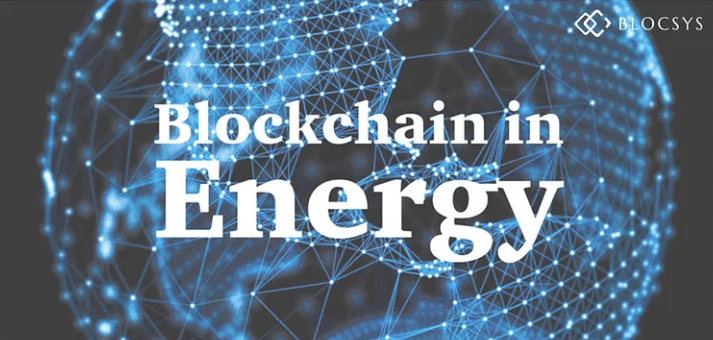The future of energy lies in decentralization. Traditional power distribution models rely on large, centralized grids that distribute electricity from a few key producers to consumers. While effective for the past century, these models are increasingly showing their limitations. Rising energy demands, grid vulnerabilities, and the need for renewable energy integration call for innovative solutions. Enter blockchain technology and decentralized energy grids — a revolutionary approach that promises to redefine how power is produced, distributed, and consumed.
The Shift Toward Decentralized Energy Grids
Decentralized energy grids, also known as microgrids, operate independently or in conjunction with traditional energy grids. They enable localized energy production and distribution, often relying on renewable sources like solar panels, wind turbines, and other green technologies. Unlike centralized systems, decentralized grids empower consumers to become “prosumers” — both producers and consumers of energy.
The role of blockchain in this transformation is crucial. By enabling transparent, secure, and efficient transactions, blockchain facilitates the seamless integration of decentralized energy grids, allowing users to trade and manage energy resources without the need for a centralized authority.
How Blockchain Revolutionizes Energy Distribution
Blockchain’s impact on decentralized energy grids lies in its ability to create an open, immutable ledger for energy transactions. Here’s how blockchain contributes to a more efficient and sustainable energy distribution model:
- Peer-to-Peer Energy Trading
Blockchain enables peer-to-peer (P2P) energy trading, allowing consumers to buy and sell excess energy directly with one another. This creates a dynamic marketplace where individuals can optimize their energy usage and reduce reliance on centralized utilities. - Automated Transactions with Smart Contracts
Through smart contracts, energy transactions can be automated and executed based on pre-set conditions. For example, a household generating surplus solar energy can automatically sell it to a neighbor when specific conditions are met, such as peak energy demand or price thresholds. - Enhanced Transparency and Security
Blockchain’s immutable ledger ensures that all energy transactions are recorded transparently and securely. This reduces the risk of fraud, ensures accurate billing, and enhances trust among participants in decentralized energy markets. - Energy Credits and Incentives
Blockchain can facilitate the issuance and trading of energy credits, rewarding consumers who generate renewable energy or reduce their consumption. These credits can be traded or redeemed, incentivizing environmentally friendly behavior. - Real-Time Energy Management
With blockchain, energy providers and consumers can access real-time data on energy production, consumption, and grid performance. This improves efficiency, enables demand-response strategies, and helps balance supply and demand across decentralized grids.
Benefits of Blockchain in Decentralized Energy Systems
The integration of blockchain with decentralized energy grids offers several advantages, both for consumers and the broader energy industry:
- Lower Costs: By cutting out intermediaries, blockchain reduces transaction costs associated with energy trading, making it more affordable for consumers.
- Increased Energy Independence: Decentralized energy grids allow communities and individuals to rely less on centralized utilities, offering greater control over energy sources and usage.
- Support for Renewable Energy: Blockchain facilitates the integration of renewable energy sources, making it easier for consumers to adopt clean energy solutions like solar and wind.
- Improved Grid Resilience: In the event of grid failures or natural disasters, decentralized energy systems supported by blockchain can continue to operate autonomously, providing reliable power to local areas.
Use Cases of Blockchain in Decentralized Energy Grids
Several real-world projects are already demonstrating the potential of blockchain in decentralized energy grids:
- Brooklyn Microgrid
One of the most well-known examples is the Brooklyn Microgrid project in New York. Using blockchain, the project allows residents to trade surplus solar energy with their neighbors, creating a local, decentralized energy market. - Power Ledger
Power Ledger, an Australian-based platform, uses blockchain to enable peer-to-peer energy trading and manage renewable energy credits. Their platform has been deployed in several countries, including Australia, Japan, and the United States. - LO3 Energy
LO3 Energy is a pioneer in using blockchain for energy trading and grid management. Their platform allows local communities to create their own energy markets, where participants can buy and sell energy from renewable sources.
Challenges and Opportunities
While blockchain offers significant promise for decentralized energy grids, it’s not without challenges:
- Scalability: Blockchain networks need to scale efficiently to handle the high volume of transactions in energy markets, especially in densely populated areas.
- Energy Consumption: Some blockchain networks, particularly those using proof-of-work consensus mechanisms, consume large amounts of energy. This is counterproductive in the context of renewable energy systems, highlighting the need for more energy-efficient blockchain protocols.
- Regulatory Barriers: In many regions, energy markets are highly regulated, and the adoption of blockchain for decentralized grids may require changes to existing legal frameworks.
However, these challenges present opportunities for innovation. As blockchain technology continues to evolve, new solutions will emerge that enhance scalability, reduce energy consumption, and navigate regulatory complexities.
Conclusion
The combination of blockchain technology and decentralized energy grids represents a paradigm shift in how we produce, distribute, and consume power. By enabling peer-to-peer energy trading, increasing transparency, and supporting renewable energy adoption, blockchain offers a new model for a more efficient, resilient, and sustainable energy future.
As a blockchain development company, we are at the forefront of this revolution, working to build the decentralized systems that will power tomorrow’s energy networks. With blockchain, we are not just reshaping the energy industry; we are creating a sustainable and empowered future for all.






